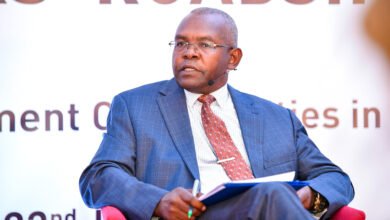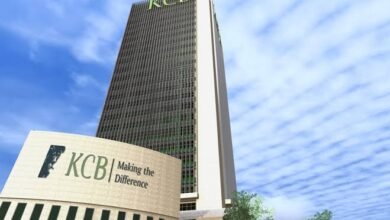
Central Bank of Kenya (CBK) Governor Dr. Parick Njoroge is now calling for all commercial banks to apply a uniform lending model which will enable assessment of eligibility of borrower to access credit.
In the wake of the toppling economy, alongside a hard cry by Kenyans for tough lending rates, the Governor has directed all commercial banks to formulate a model that will be used to assess borrowers and make lending decisions.
While this is intended to be a signal to banks to lower their lending rates, Dr. Njoroge wants commercial banks to give a clear indication of how they intend to extend credit going forward.
“We are working with banks to come up with a robust plan.it cannot just be random for example how do you asses an individual, they will have to present the plan to us first.” Said Njoroge.
In November 2019, President Uhuru Kenyatta signed into law the Finance Bill 2019 which among other provisions, repealed section 33b of the Banking Act which prompted capping of interest rates.
Although the removal of rate cap was aimed at enhancing access to credit especially by the private sector and cut off exploitative lenders, it was not lost on many that borrowers would have to once again face commercial banks in order to take out loans.
The CBK has in the past two months lowered its policy benchmark lending rate twice to the current level of 8.25 percent up from 8.5 percent in a bid to cushion borrowers from the risk of being exposed to expensive loans.
However, the Governor was not indicative enough to issue a deadline for the plan but was optimistic that a plan will be ready within the first quarter of 2020.
“By March or April, we should have talked to all banks. We cannot issue a definite date but it will depend on how fast the banks can finish their plans and kick-off.”
Governor Njoroge was also concerned about the volume of pending bills by the national government which were largely blamed for slower economic growth in 2019, with the bills amounting to Ksh58.2 billion.
According to Dr. Njoroge, all pending bills dating back five years had been cleared as of January 23 but counties were yet to clear most of their pending bills to suppliers.
“Treasury clear all the current bills what is left is historical pending bills that have to be investigated first. In the counties, out of Ksh88.98 billion pending bills. Only Ksh51.3 billion was payable. Ksh30.3bilion was in January.”
Pending bills have dealt a major blow on the ability of borrowers to repay their loans, a situation that resulted in a growing number of loan defaults.
According to the Kenya Bankers Association (KBA), for instance, defaults on home loans alone had attained Ksh38 billion as of November last year. So far, up to Ksh7 billion worth of non-performing loans have been recovered as efforts to recover more loans continue.
“We are concerned not just in real estate but across sectors. We are telling banks to be cautious with mortgages and instead diversify.” Said Njoroge
The government is, however re-aligning its borrowing status to focus more on local and longer-dated Treasury bonds, and this will see the state go for Ksh300.3 billion domestic loan.
“We want to go now for the T-bonds that have a longer payment period as opposed to T-bills-you have been writing that the government is unable to pay.”
Dr. Njoroge’s remarks came nearly a fortnight after the International Monetary Fund (IMF) indicated that half of the ongoing 1000 projects in the country have stalled and that the stalled projects will require Ksh1 trillion to be functional.
According to IMF, there was a rapid increase in public investment since 2010 which has occurred without enough screening for project viability and readiness before they entered the budget.





